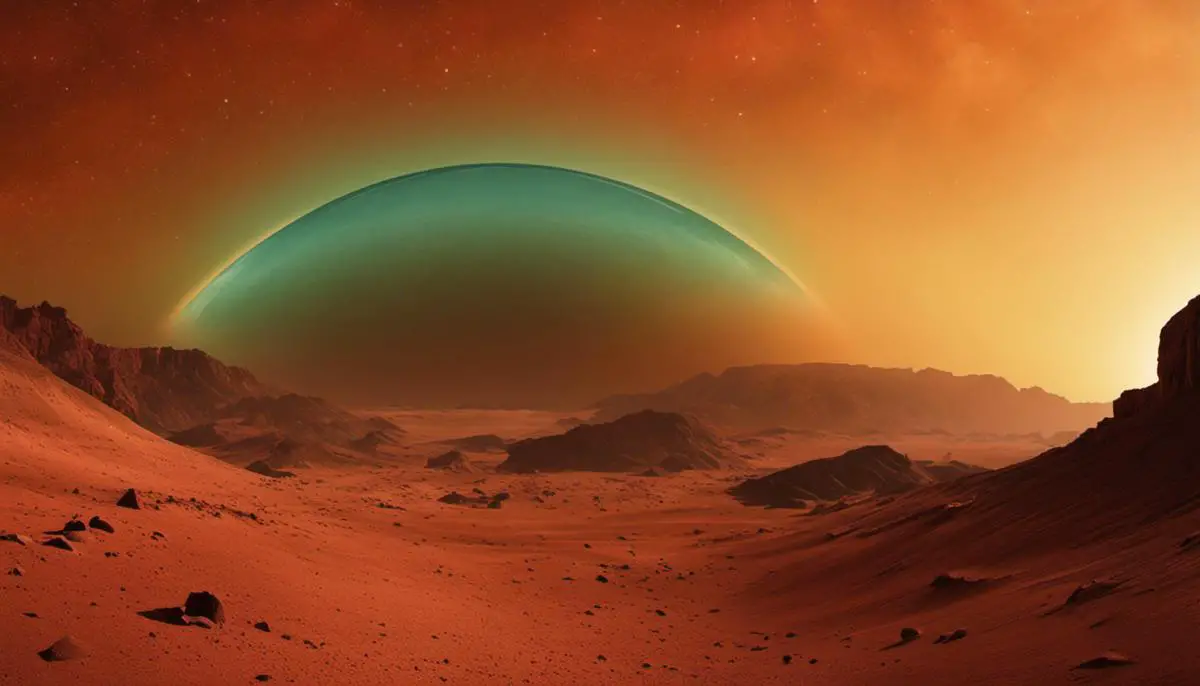Understanding the vast, intriguing expanse of our universe starts with an exploration of our neighboring planets – such as Mars, the Red Planet, and the stunning gas giant, Saturn. As two noticeably contrasting celestial bodies, these planets offer unique insights into their intricate climates and the factors influencing their temperature ranges. Although Mars, shrouded in rust-colored mystery, and Saturn, famous for its glamorous rings, are both captivating in their own rights, knowing about their temperatures unlocks nuanced nuances about their potential habitability and chances of harboring life. This article unwraps detailed comparisons regarding the temperature ranges on both these planets, the factors that generate these conditions, and the implications of the temperatures for life forms as we understand them.
Temperature Ranges on Mars
Temperature Ranges on Mars
According to NASA, Mars has a daytime temperature averaging around -80 degrees Fahrenheit. This can reach up to -20 degrees Fahrenheit at its equator during summer. Its winter is much colder, with a recorded low of -195 degrees Fahrenheit at the poles. There is significant daily temperature variation on Mars due to its thin atmosphere.
Factors contributing to these extreme conditions include its location in the solar system, axial tilt, and geographical features. Mars is approximately 1.5 times farther from the sun than Earth. Because of the increased distance, it receives less sunlight, hence less heat.
Additionally, Mars’ thin atmosphere, composed of about 95% carbon dioxide, provides little insulation, allowing heat to easily escape into space. The lack of atmospheric heat retention coupled with the planet’s distance from the sun account for Mars’ overall low temperatures.
Mars’ axial tilt also has a significant effect on its climate and temperature. Like Earth, Mars has a tilted axis. This tilt, combined with its elliptical orbit, leads to long, cold winters and short, somewhat warmer summers.
Comparing Mars and Saturn’s temperatures
Looking at Mars and Saturn reflects an intriguing contrast in temperatures due to their respective distances from the sun and astrological characteristics. Saturn, being the sixth planet and about 9.5 times farther from the sun than Earth, is approximately 6 times farther than Mars. As a result, the sun’s warming impact is considerably reduced, leading to significantly lower temperatures on Saturn.
Records from NASA indicate Saturn’s average temperature hovers around -288 degrees Fahrenheit, far colder than Mars’ average temperature. This is just above the temperature of liquid nitrogen, but it is important to remember that temperatures can fluctuate within different layers and regions of the gas giant.
While both Mars and Saturn have thin atmospheres contributing towards their respective heat loss, Mars’ atmosphere largely contains carbon dioxide, whereas Saturn’s atmosphere primarily comprises hydrogen and helium. The latter gases are poorer heat retainers, resulting in much colder temperatures on Saturn.
Mars’ axial tilt influences its temperature variations, but Saturn’s tilt is steeper. However, being a gas giant, Saturn’s small solid core and its gas-filled atmosphere disseminate the sun’s heat, lessening the temperature impact of its tilt.
In summation, even though both planets feature extreme cold, Saturn’s temperatures are markedly lower compared to Mars due to its greater distance from the sun, its unique atmospheric composition, and its status as a gas giant.
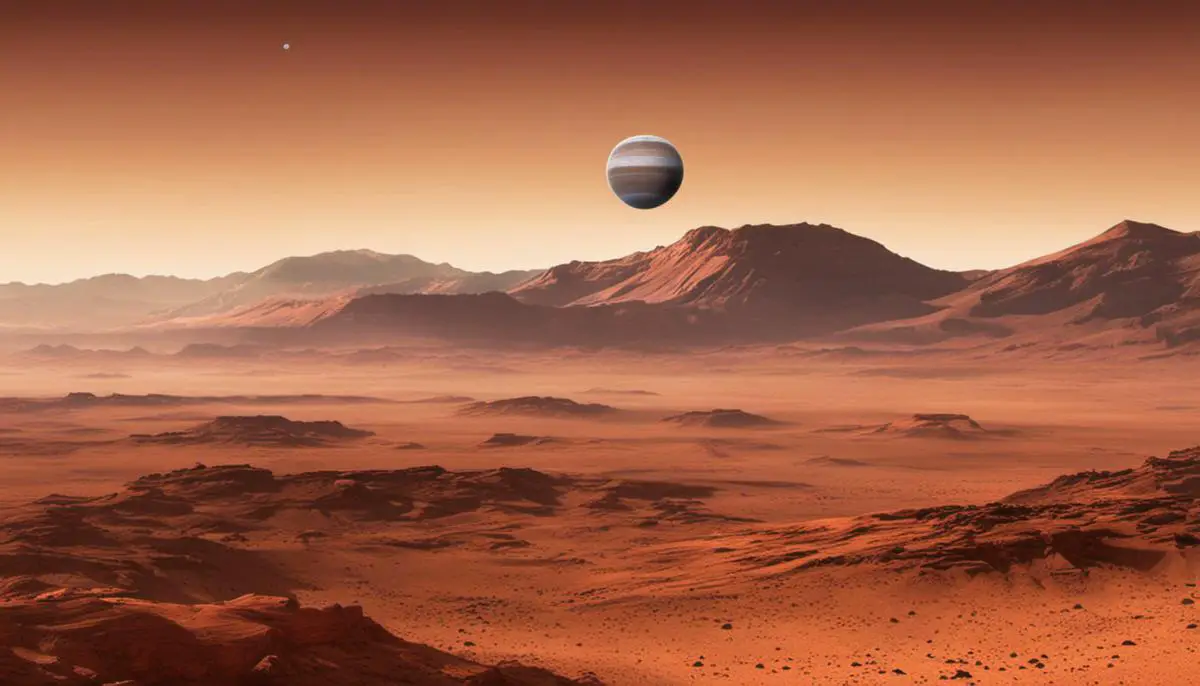
Temperature Ranges on Saturn
Saturn’s Temperature Variation: A Game of Distance and Composition
Saturn, the second-largest planet in our solar system, experiences considerable temperature fluctuations due to its distance from the Sun and its distinctive atmospheric composition. Being approximately 890 million miles away from the Sun results in overall cold temperatures on the gas giant’s surface.
At the level where Saturn’s atmospheric pressure mirrors that of Earth’s sea-level pressure, temperatures average around -288 degrees Fahrenheit. But as one delves deeper into Saturn’s thick atmosphere composed of hydrogen and helium, temperatures rise significantly. Surrounding the core, at the base of Saturn’s atmosphere, temperatures could skyrocket to around 21,000 degrees Fahrenheit. Remarkably, this is hotter than the surface of the Sun, due to the severe pressures and the formation of metallic hydrogen.
Comparison: Mars Versus Saturn, A Study in Contrasts
By comparison, Mars, the fourth planet from the Sun and our next-door planet, has a wildly fluctuating temperature scale that ranges from a balmy 70 degrees Fahrenheit during the day, down to a frigid -225 degrees Fahrenheit at night. These temperature swings are primarily due to Mars’ thin atmosphere, which consists of about 95% carbon dioxide, and inability to regulate and retain heat.
Given both planets’ distances from the Sun, it is expected that Saturn, being farther away, would have colder average surface temperatures compared to Mars. Mars, with its global temperature around -80 degrees Fahrenheit, is colder than Earth but still warmer than Saturn, owing to its proximity to the Sun. However, the temperature increases with depth on both planets, but markedly more on Saturn due to greater atmospheric density and vast pressures exerting on its core.
Atmospheric Composition Influences Temperature
The gas composition of Saturn and Mars significantly impacts these temperatures. Mars’ thin atmosphere, lacked with a significant amount of greenhouse gases, contributes to its inability to trap and hold more heat from the Sun—ultimately leading to drastic temperature swings from day to night. In contrast, the thick atmosphere of Saturn, being densely packed with hydrogen and helium, contributes to the temperature increases with depth, being the warmest at the core.
What The Core Temperature Tells Us
Interestingly, despite Mars being closer to the Sun, Saturn’s core temperature is much more elevated. This can be attributed to the fact that Saturn is a gas giant, characterised by an extremely high-pressure environment where heat generated from the core can’t easily escape, resulting in a much higher core temperature.
Planets Mars and Saturn are intriguing constituents of our galactic neighborhood, both showing fascinating variations in temperature. A number of factors influence these immense differences in temperature, including their respective distances from the Sun and the individual compositions of their atmospheres. By delving deeper into these striking contrasts, we can appreciate the breadth of differences that exist among planets within our very own solar system.
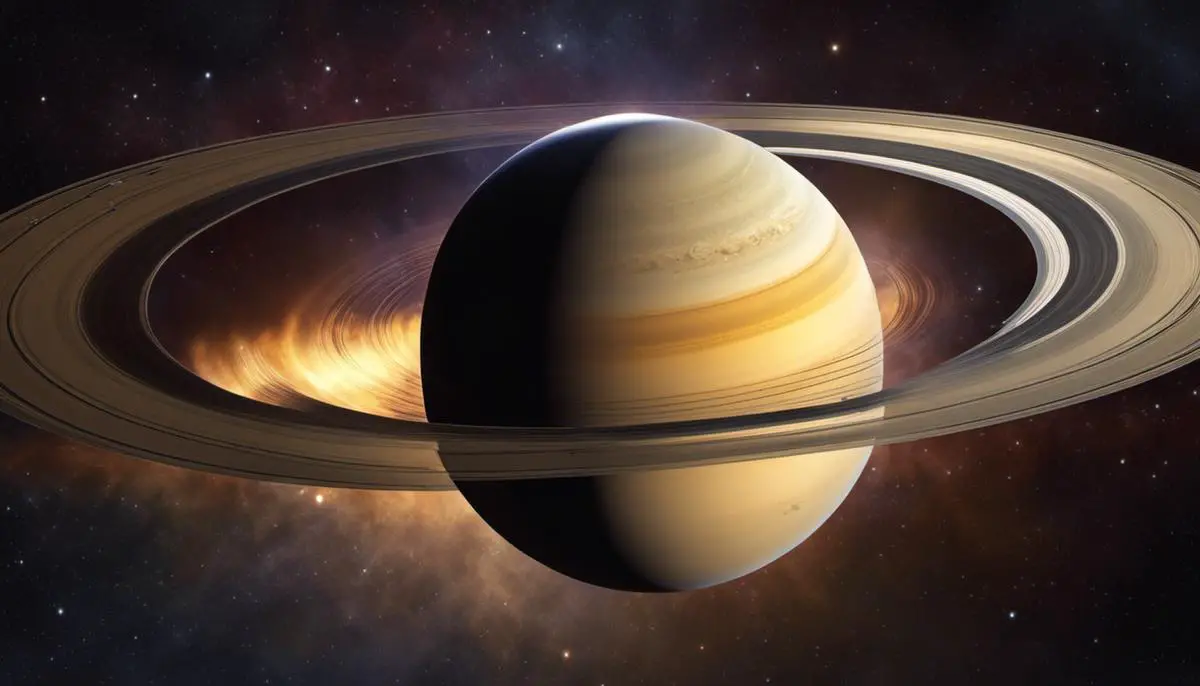
Factors Influencing Temperatures
Role of Orbit and Rotation in Mars and Saturn’s Temperature Differences
The orbits and rotations of Mars and Saturn play crucial roles in the difference in their temperatures. Positioned closer to the sun, Mars follows an elliptical orbit, leading to vast surface temperature swings. Its proximate point to the sun can see the temperature soaring up to 70 degrees Fahrenheit, whereas at its most distant point, it can plummet to a freezing -195 degrees Fahrenheit. With a day on Mars approximately equivalent to ours at 24.6 hours, the planet experiences daily temperature variations.
In contrast, Saturn is at a greater distance from the sun, and consequently, its average temperature is a bracing -285 degrees Fahrenheit. Despite having a faster rotation cycle, completing a day in roughly 10.6 hours, this rapid turning doesn’t manage to heat Saturn’s lower layers enough to create significant temperature fluctuations.
Atmospheric Factors Distinctly Impact Temperatures
Atmosphere composition significantly contributes to the temperatures of Mars and Saturn. Mars’ thin atmosphere, composed mostly of carbon dioxide, is ineffective at trapping heat, leading to considerable temperature fluctuations between day and night. Its atmosphere also lacks a strong greenhouse effect, which contributes to Mars’ overall cooler temperature.
Unlike Mars, Saturn’s atmosphere is dense and composed primarily of hydrogen and helium, with trace amounts of methane, ammonia, and water vapor. Despite this, the large distance from the sun shapes Saturn as a bitterly cold world. Its dense atmosphere assists in maintaining a stable yet extremely low temperature, mitigating temperature differences between night and day.
Geological Attributes Influence on Temperature
Mars’ geology also plays a role in its temperature. The Red Planet’s surface is covered in iron-rich minerals that absorb sunlight and heat, leading to significant temperature rise during the day. Moreover, Mars’ polar ice caps of frozen carbon dioxide and water reflect sunlight, keeping the pole regions significantly colder than its equatorial region.
Saturn, being a gas giant, lacks a solid surface. Hence, geological attributes contributing to its temperature are different. The internal heat generated by Saturn’s high-pressure core and its slow, consistent release greatly impacts the overall temperature more than any sunlight could. This heat generation results in Saturn’s steady, cold temperatures across its gaseous surface, balancing out the coldness of its far reach from the sun.
The distinct positions, rotations, atmospheric compositions, and geological elements of Mars and Saturn give rise to their unique climatic conditions. Mars, despite its relative proximity to the sun and the thinness of its atmosphere, is characterized by its stark temperature changes due to its geology rich in iron. Conversely, Saturn, possessing a denser atmosphere and generating its own internal heat, still faces extremely cold temperatures largely because of its greater distance from the sun.
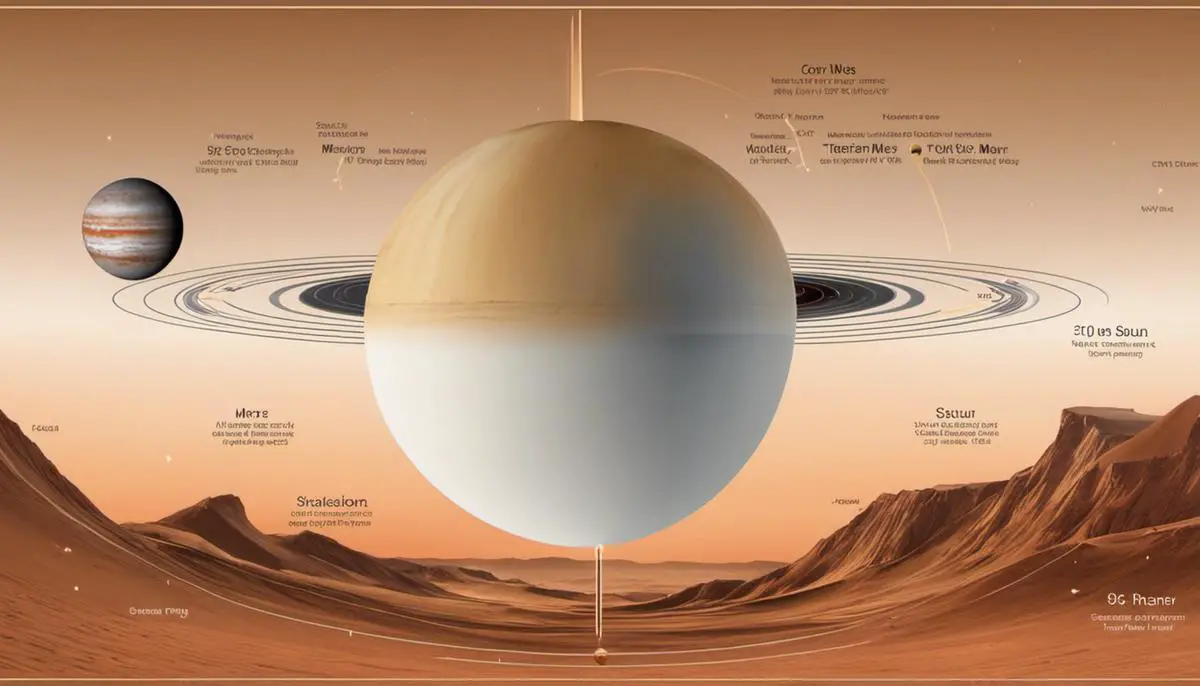
Implications of the Temperatures for Life
The Impact of Mars’ Temperature on the Possibility of Life
Mars, in comparison to Saturn, provides a more conducive environment for life because of its temperature conditions and atmospheric qualities. Mars has a very cold climate, averaging around -80 degrees Fahrenheit. Such cold temperatures might seem inhospitable to humans, yet they are within the survivable range for certain microbial life forms. Some extremophiles, or organisms that can endure extreme conditions, found here on Earth have been known to thrive in temperatures below -80 degrees Fahrenheit.
Interestingly, this very cold climate could be supportive of liquid water presence on Mars. The polar ice caps on Mars, predominantly made up of water ice, might melt during warmer periods and provide the stipulated moisture needed for certain forms of life. This possibility has sparked interest in theories regarding bacterial life potentially existing or having existed on Mars.
Besides, the Curiosity Rover from NASA has ascertained that Mars’ soil is about 2% water by volume, presenting yet another potential water source. This finding, coupled with images from the Mars Reconnaissance Orbiter showcasing potential traces of flowing water on Mars’ surface, supports the idea of Mars being a feasible candidate for life despite its harsh cold temperatures.
Implications of Temperatures on Saturn for Life
Saturn’s average temperature is far colder, around -288 degrees Fahrenheit. These temperatures can plunge even further in the upper cloud cover, making the planet incredibly hostile to life, at least in the forms we understand. To date, no evidence or optimistic theories suggest that life could withstand this severe cold.
Furthermore, Saturn is a gas giant, primarily composed of hydrogen and helium, which means it lacks the solid surface available on Mars. This lack of an environment to stimulate and contain the development of complex life forms is another factor that greatly reduces the chances of life existing there.
However, one of Saturn’s moons, Titan, has temperatures and atmospheric pressure comparable to that of early Earth. While the temperatures are still extremely low (around -290 degrees Fahrenheit), the presence of liquid hydrocarbons on Titan’s surface and in its atmosphere raises intriguing questions about the potential for unique forms of life.
Investigating life on other planets involves much more than just temperature. It involves seeking an environment with a specific set of conditions—water, certain chemical elements, and a steady source of energy—any and all of which can support life as we know it. For these reasons, Mars, despite its frigid temperatures, remains a strong candidate for the discovery of extraterrestrial life, while Saturn’s harsh, cold conditions make it far less likely to host life.
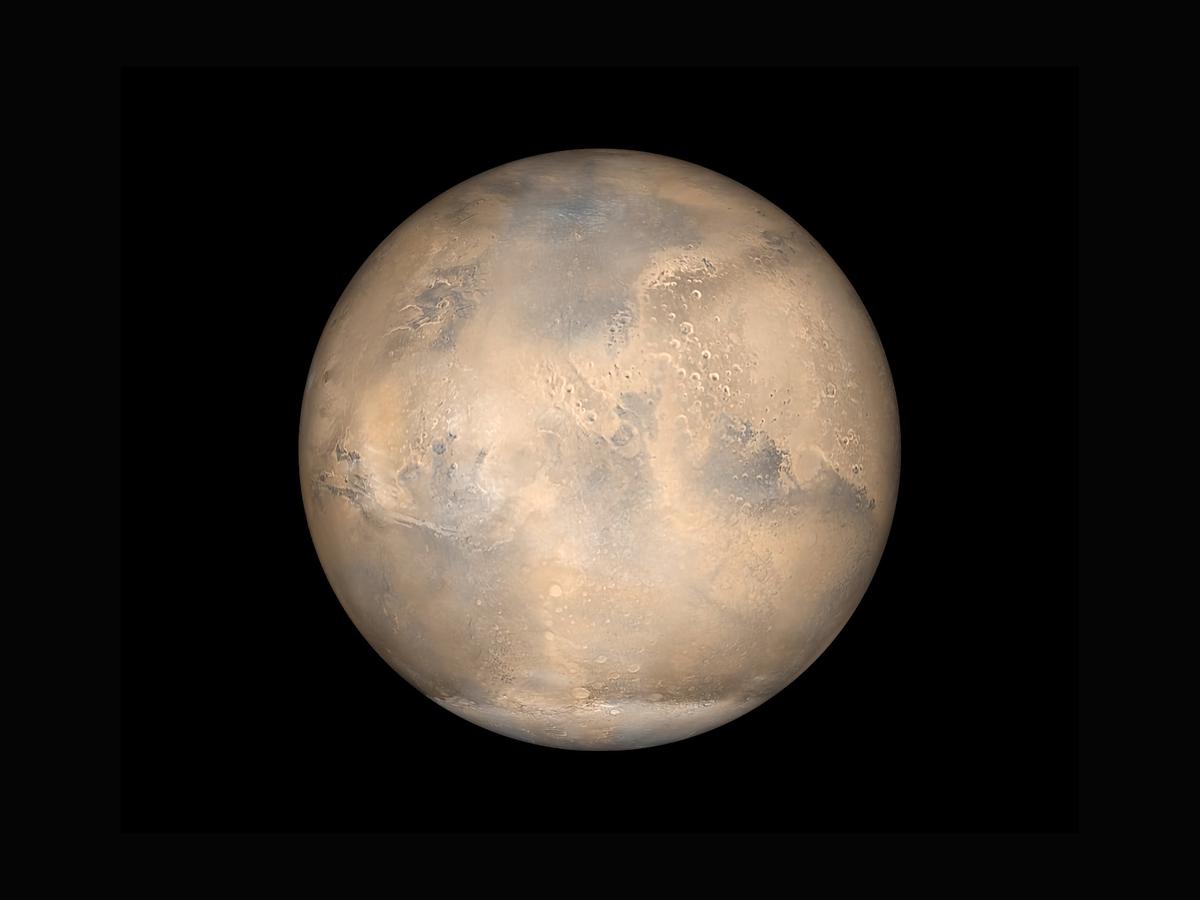
While Mars and Saturn are similar in that they’re both part of our cosmic neighborhood, their stark differences in temperature and climatic profiles underline the diverse characteristics across the planets in our solar system. The thin atmosphere and cooler temperatures of Mars, coupled with its red iron oxide surface, stand in stark contrast to Saturn’s gas-heavy, hotter core and chillier surface. Decoding the story held by these temperature variances amplifies our understanding of whether life could potentially exist or thrive on either Mars or Saturn. Such knowledge holds boundless possibilities for future space explorations, potentially altering our perception of the universe and life itself.
![]()
